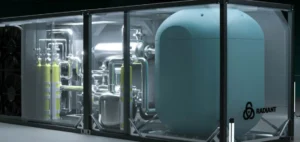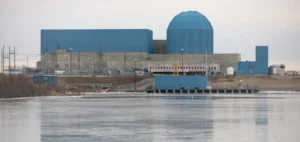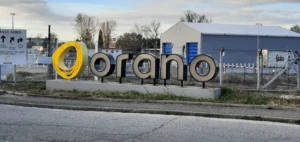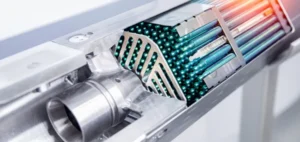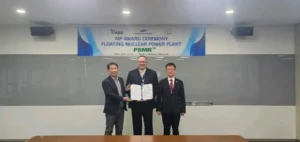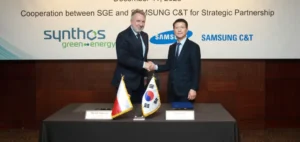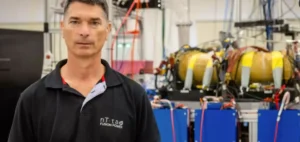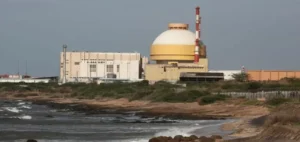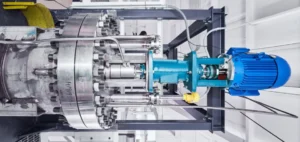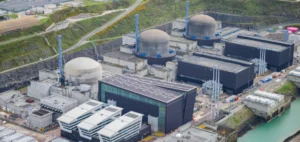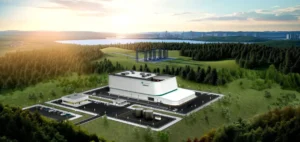NANO Nuclear Energy is benefiting from the U.S. Department of Energy’s (DOE) GAIN (Gateway for Accelerated Innovation in Nuclear) program to further develop its portable nuclear reactor, dubbed ‘ZEUS’.
The reactor, designed to operate without a coolant, uses an open-air Brayton cycle to dissipate the heat generated by the reactor core.
This technology could offer a compact, reliable energy solution for isolated areas or specific industrial applications.
The collaboration between NANO Nuclear and Idaho National Laboratory (INL) focuses on the evaluation and optimization of a key reactor component: the heat exchanger.
This partnership aims to model the thermodynamic behavior of the device to ensure efficient energy management.
This step is crucial to validate the viability of this technology before its possible commercialization.
The role of the GAIN program in supporting innovation
The GAIN program was set up by the DOE to accelerate innovation in the nuclear field by providing technical, regulatory and financial support to companies in the sector.
The vouchers awarded by this program enable companies to collaborate with DOE laboratories, such as INL, to overcome technological obstacles.
For NANO Nuclear, this collaboration is aimed at developing simulation tools capable of modeling heat exchanger performance.
Unlike direct funding, GAIN vouchers finance DOE laboratories, which contribute their expertise and technical resources to help companies achieve critical milestones in the development of their innovations.
This type of support is essential for technologies such as the ‘ZEUS’ micro-reactor, which require rigorous validation before they can be integrated into industrial applications.
Technical advances and prospects for the ‘ZEUS’ reactor
The ‘ZEUS’ reactor stands out for its ability to generate between 1 and 2 MW of electricity without the use of heat transfer fluids.
This micro-reactor concept aims to offer a portable, compact and easily deployable energy solution.
One of the key innovations of this technology is the heat exchanger, designed to operate with an open-air thermodynamic cycle.
This component enables the reactor to be maintained at optimum operating temperatures, while limiting the complexity and size of the system.
The partnership with INL will enable this design to be validated through detailed simulations and performance analyses.
These assessments are essential to ensure that the reactor can operate under real-life conditions, particularly in environments where decentralized, rapidly deployable energy solutions are required.
This technology could, for example, be used in rural areas or industrial environments requiring a secure, continuous power supply.
A strategic partnership with INL
INL’s expertise in nuclear technology assessment makes it an ideal partner for NANO Nuclear.
The laboratory has already collaborated with the company on previous projects, including the evaluation of the preliminary design of the ‘ODIN’ micro-reactor.
This working relationship has strengthened the technical credibility of NANO Nuclear’s projects, while providing independent validation of their technologies.
As part of the GAIN voucher, INL will develop a computer model to simulate the thermal performance of the heat exchanger.
The model will analyze energy flows, interactions between the reactor and the heat exchanger, and heat dissipation.
This information will enable NANO Nuclear to fine-tune its design before moving on to the next stage of development.
Outlook for the nuclear sector
The GAIN program and its initiatives in support of miniaturized nuclear technologies are part of a broader strategy of innovation in the US energy sector.
The ability to provide decentralized, modular and easily transportable energy solutions such as the ‘ZEUS’ micro-reactor opens up new prospects for a variety of industries.
Companies, particularly in the industrial or military sectors, could benefit from this technology for temporary installations or in areas with limited access.
The competitive advantage of the ‘ZEUS’ reactor lies in its portability and ability to provide reliable power without heavy infrastructure.
This type of micro-reactor could therefore meet specific needs where traditional power grids are absent or unreliable.
What’s more, the simplicity of its design reduces maintenance and operating costs, making it even more attractive to sectors seeking to optimize their energy resources.






